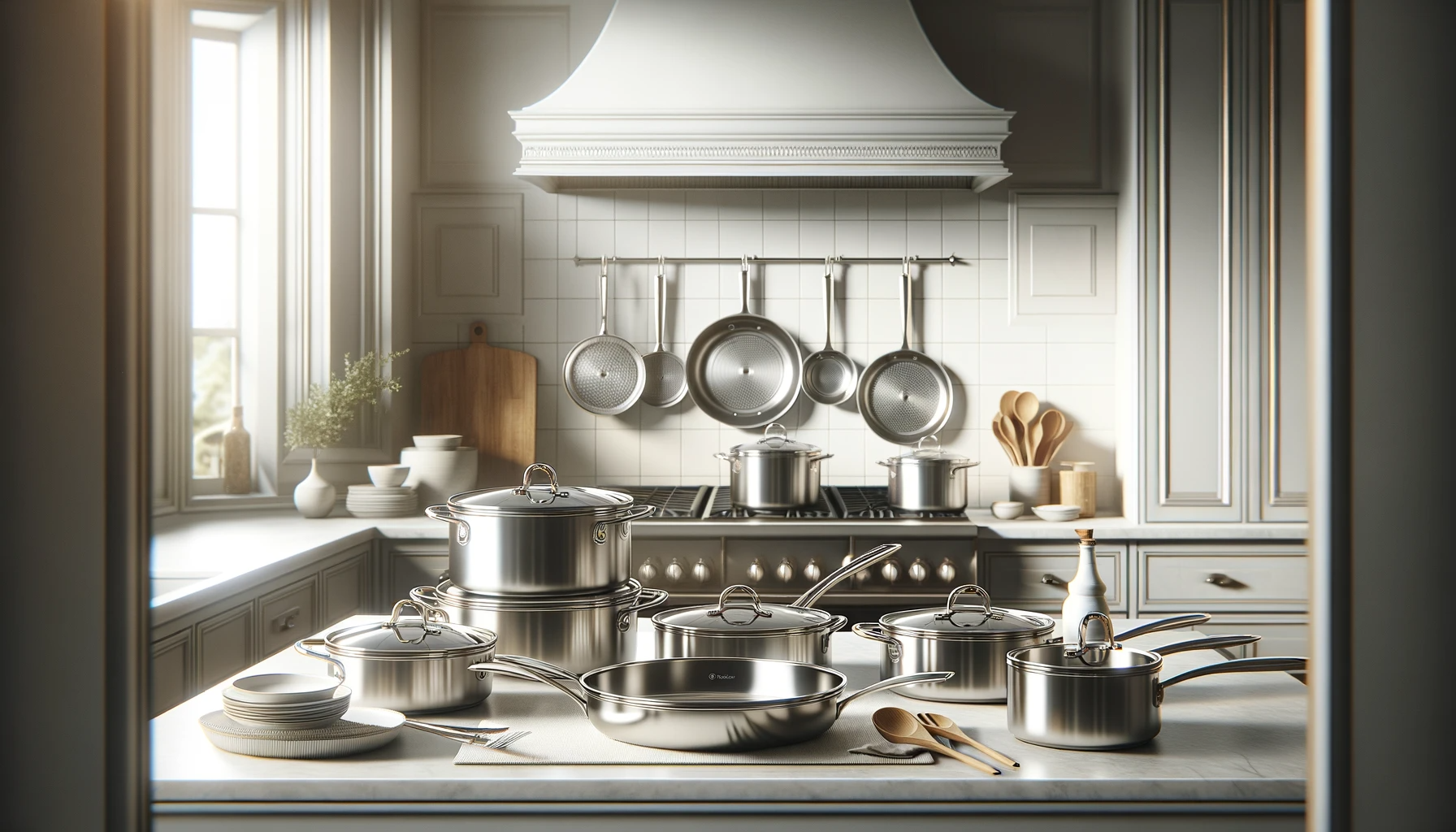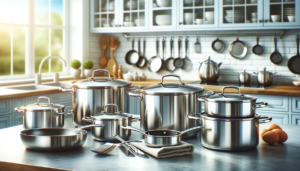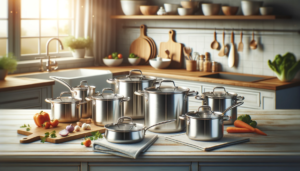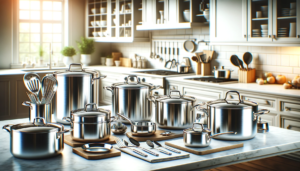Have you ever wondered if your sleek stainless steel pots and pans can be used in the oven as easily as the stovetop?
When it comes to prestigious cookware brands like Wolfgang Puck, the answer may surprise you.
Understanding if and how Wolfgang Puck stainless steel cookware can be used in oven cooking holds the key to unlocking the full potential of your kitchen arsenal.
Let’s examine what specifications to look for to determine if Wolfgang Puck pans and baking dishes can safely go into ovens for all your cooking needs.
Can Wolfgang Puck Stainless Steel Cookware Go In The Oven?

The simple answer is yes, Wolfgang Puck stainless steel cookware is often oven-safe and can be used for baking, roasting, broiling, and other oven cooking methods.
However, not all pieces may be rated for oven heat depending factors like maximum temperature thresholds, handles, lids and overall construction durability.
Checking your manual specifications provides definitive oven safety guidelines tailored to your specific cookware.
As we explore in detail below, understanding protocols around proper handling, use, and signs of damage are also essential to safely unlock the full cooking potential of your Wolfgang Puck stainless steel collection in the oven.
Wolfgang Puck Stainless Steel Cookware Overview
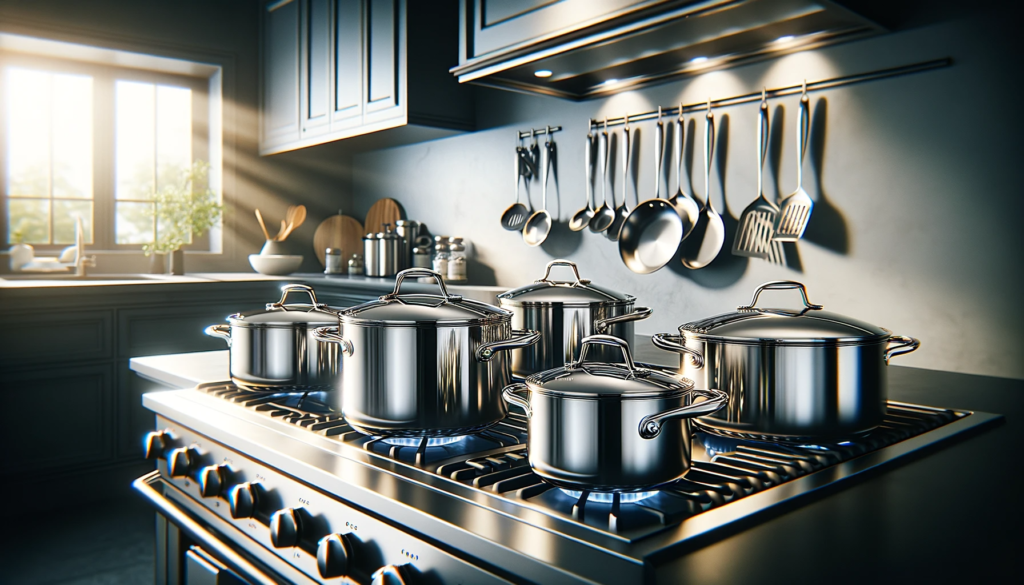
Wolfgang Puck stainless steel cookware is known for its durability, even heating, and modern aesthetics.
The cookware line is constructed from commercial grade stainless steel which contains some aluminum for optimal heat conduction.
Based on the specific cookware piece, the steel may becombined with an aluminum core or base to allow for efficient cooking that rivalscopper and aluminum cookware.
The Wolfgang Puck stainless steel cookware utilizes triply construction with an aluminum core surrounded by stainless steel walls.
This allows the pans to heat up quickly but also cool down rapidly once removed from the stove.
The cookware is also designed with an appealing mirror finish and fitted riveted handles.
Special vented lids are used to circulate heat and moisture.
Overall, the materialscombine efficiency, durability, and ease of use.
However, due to differences amongst the stainless steel cookware pieces, not all items may be suitable for oven use.
Bakeware is constructed differently than frying pans and sauce pots.
Therefore, we need to examine the specifications and manual for any oven safety guidelines.
Factors like maximum oven safe temperatures and handle compositions play a role in determining what items can safely go in the oven versus solely stovetop cooking.
Care must also be taken when handling any hot cookware.
Checking The Manual And Specifications

The first step to see if Wolfgang Puck stainless steel cookware can safely go in the oven is to consult the manufacturer specifications and included manual.
The user guide and labels should indicate if a pot, pan, or bakeware piece is oven-safe.
Any maximum oven temperature thresholds will typically be printed here as well.
As an example, a stainless steel frying pan may only be rated for up to 500 degree Fahrenheit oven use.
Exceeding this temp could damage the pan by warping the shape or melting plastic handles.
On the other hand, stainless steel bakeware like muffin tins or baking sheets would be expected to tolerate hotter oven ranges since their express purpose is oven cooking.
Checking each individual item is important however since variations occur across a cookware line.
A stock pot may list stove top cooking exclusively while a roasting dish is approved for broiler use.
Always defer to the manufacturer manual for the definitive word on safe usage guidelines.
If no oven information is provided, it is best to assume the cookware is not designed for anything beyond stovetop cooking to prevent possible damage.
Differences Between Cookware Pieces
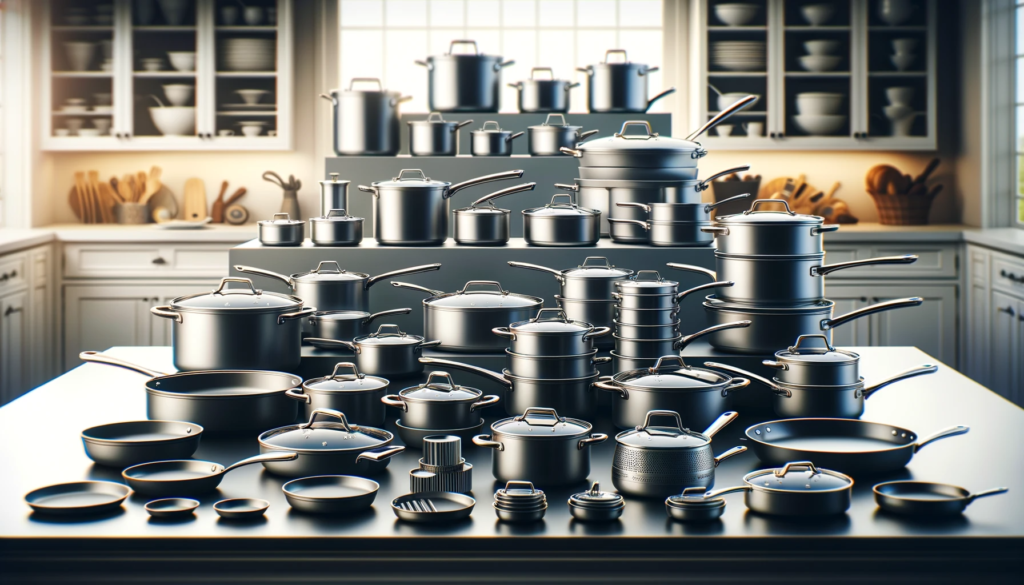
There can be considerable differences among stainless steel cookware when it comes to oven safety.
Pots and pans designed for frying and boiling on the stove have distinct material compositions and structural builds compared to items intended for baking.
For example, stainless steel pots and pans make use of riveted handles and vented lids.
The handles provide easier lifting and maneuvering on the stove while vented lids contain holes that allow steam to escape during cooking.
However, riveted handles may come loose or degrade under high oven temperatures.
Vented lids also will not contain cooking liquids or trap heat and moisture the way non-vented solid lids will.
This can completely change the end dish being prepared.
Bakeware like cake pans, baking sheets, and muffin tins on the other hand are tailored specifically for oven use.
They lack handles entirely and utilize tighter fitting solid lids.
The pans focus more on even heat distribution without hot spots which is critical for proper oven cooking.
Any saucepan or stock pot meant exclusively for stove top use may develop scorching or uneven cooking results once placed in the oven versus dedicated bakeware.
The flat bottoms and tighter dimensions common in bake sheets also provides better stability in the oven versus rounded sauce pots that may shift as they expand under heat exposure.
Protecting Your Cookware When Using In Oven
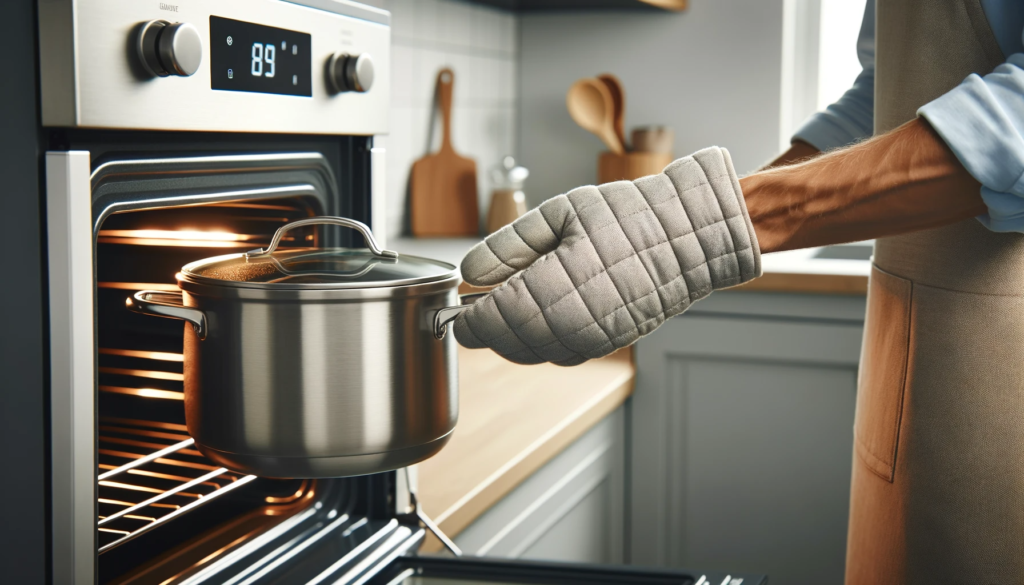
When stainless steel cookware pieces are deemed oven safe either through manufacturer approval or based on comparative construction alone, care must still be taken in their handling and use within the oven.
Pot handles, lid knobs, and any plastic components can deteriorate under high heat.
Burns are also a risk when removing hot cookware from the confined oven space using bare hands.
Mitts, pads, dry pot holders, and gloves are essential when taking pots or pans in or out of an active oven.
The handles conduct heat rapidly and will become too hot to safely grip with bare hands once exposed to oven temperatures for even brief periods of time.
Flame retardant mitts rated for high heat use are recommended as opposed to standard cloth lined oven mitts.
Any makeshift substitutions like dry towels are also not advised.
Allowing the stainless steel cookware to cool slightly once removed from the oven prior to handling or cleaning is also crucial.
Thermal shocks from drastic temperature shifts can damage the cookware.
Running an extremely hot pan under cold water immediately can cause warping or excessive material expansion and contraction leading to deformation.
Letting the pan cool down closer to room temperature on heat safe surfaces for 5-10 minutes allows the temperature change to be gradual.
This prevents excess strain on the metal alloys comprising the cookware.
Always refer back to the manual for any additional use tips when using stainless steel cookware in oven applications.
Recommended Oven Uses
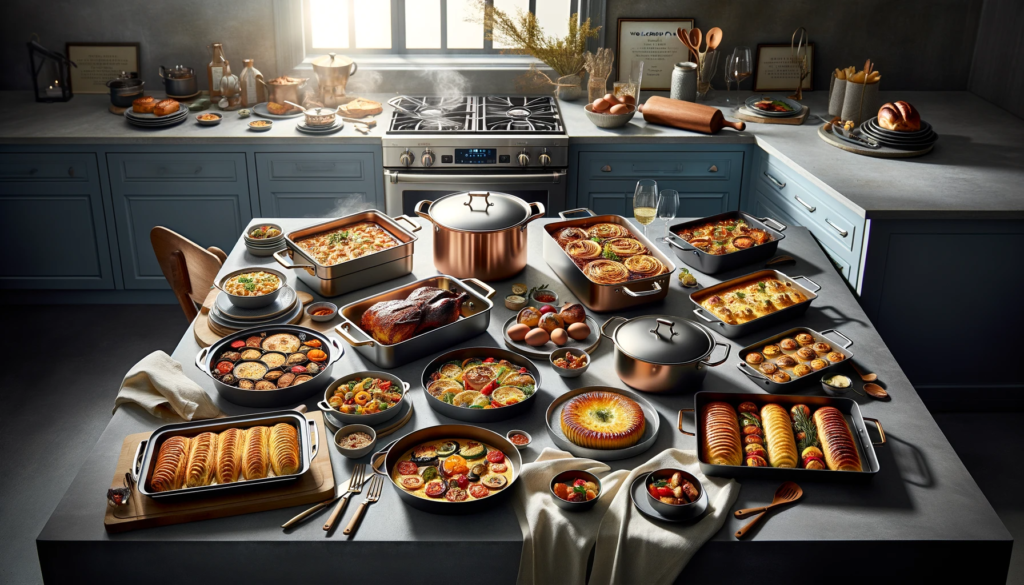
If Wolfgang Puck stainless steel cookware is rated as safe for oven use per the specifications, there are certain recipes and cooking methods that are ideally suited to the pots, pans and bakeware.
Dishes that rely on slow cooking through even gentle heat distribution can truly benefit.
This includes casseroles, roast dishes, gratins, baked pasta recipes, cereals like oatmeal, granola bars, breads, and even a one-pan pizza utilizing a stainless steel skillet as the cooking vessel.
Baking is also facilitated through the right stainless steel bakeware for the job.
Sheet pans can adapt well from freezer to oven for items like frozen french fries or tater tots to develop crispiness.
The flat, even surface promotes consistent heating.
This allows the oven to transform the food properly from a frozen state into hot and crunchy through all sides as oil is released during the thawing process.
Muffin tins and cake pans made of stainless steel also conduct ambient oven heat effectively to facilitate rising, baking, and moisture retention important for sweets.
Again, providing the bakeware is intended for oven use based on construction and manual guidelines, stainless steel can deliver excellent baking results.
Their reputation for efficiency and responsiveness when going from cold items into a hot oven or transferring from stove top preliminary cooking into the oven makes stainless often a top choice over ceramic, aluminum, and other metals.
Signs Of Damage To Look Out For
When cooking with stainless steel cookware in the oven, visual inspections are important during and after use.
If any steaming, cracking, warping, bending, or material breakdown is spotted, safely remove the cookware at once if possible.
Deformation from heat exposure is not normal if temps are within safe ranges.
Discoloration of the stainless steel finish can also indicate damage is taking place.
While stainless steel can develop a rainbow patina from frequent high heat exposure, blue-ish, yellowish or brown staining implies excessive oxidation warranting cookware replacement.
Silvery metals like stainless steel should never take on pronounced colors without an applied external finish.
Rainbow watercolor hues are one thing but solid off-tinting implies the composition is fundamentally deteriorating and no longer cooking food safely.
Pitting of the finish as metal erodes also means the stainless steel is breaking down potentially leaching nickel or iron into dishes.
Handle loosening, melting of plastic components, and lidwarping likewise are all signs to retire the cookware from all oven applications in the future.
Any physical damage domestic or commercial stainless steel oven bakeware undergoes means replacement is required for safety.
Stainless steel cookware done properly balances longevity with performance but pushing items beyond rated limits will shorten service life.
Conclusion
In summary, understanding specifications of Wolfgang Puck stainless steel cookware related to oven safety is imperative before use.
While the high quality commercial grade stainless can withstand oven heat when properly constructed for combination stove top and oven cooking convenience, clear guidelines are still needed.
Not all stainless steel is equal so checking the fine details of your particular pots, pans and baking vessels informs what baking, broiling, roasting and other oven uses are possible or allowed.
Follow all protocols on handling hot items and watch for any damage during use.
Address signs of excess wear right away and replace cookware exhibiting cracking, warping, discoloration or deterioration.
This keeps both you and your meals safe while delivering many years of reliable oven to table stainless steel performance.
